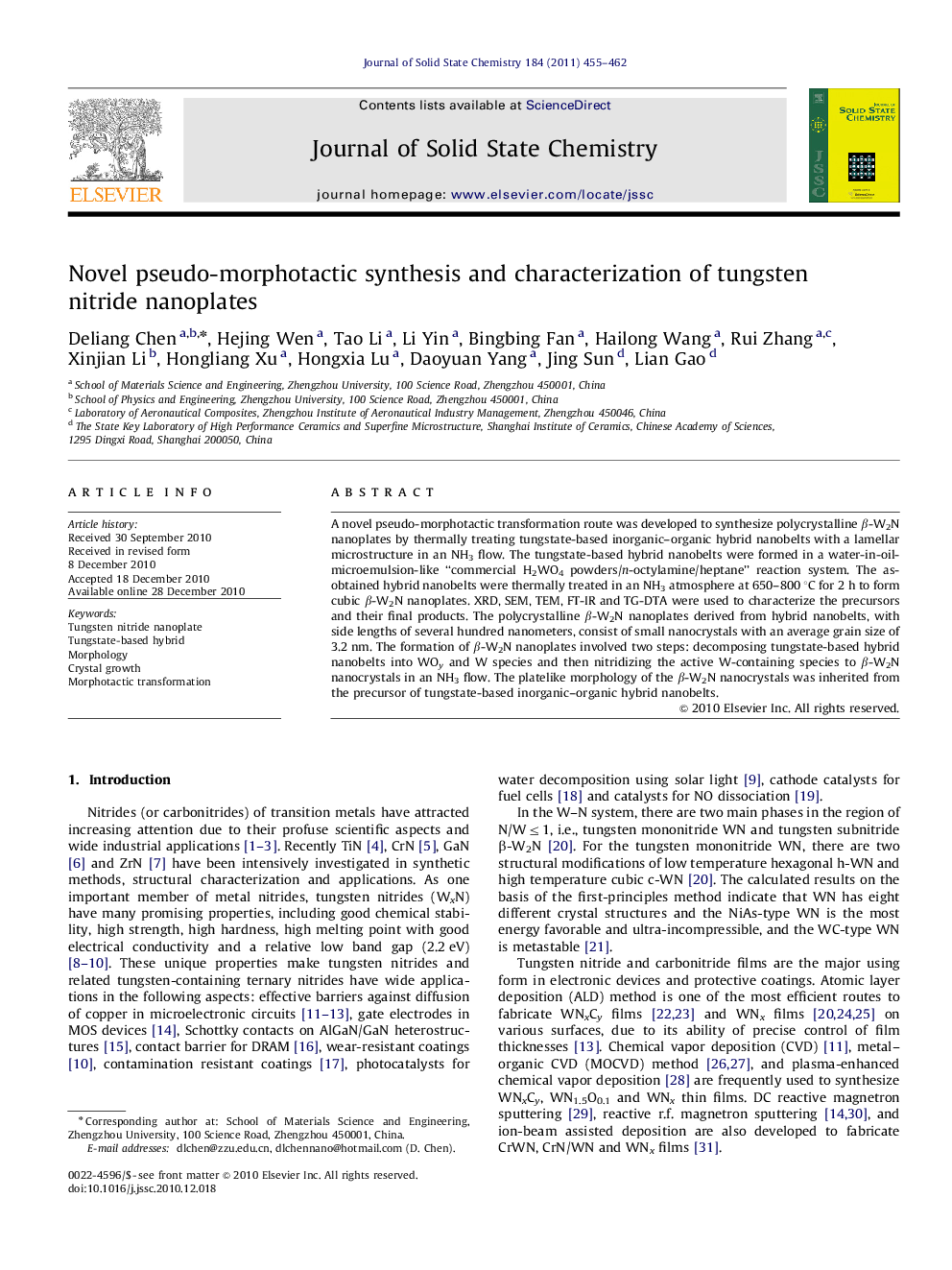| Article ID | Journal | Published Year | Pages | File Type |
|---|---|---|---|---|
| 1331024 | Journal of Solid State Chemistry | 2011 | 8 Pages |
A novel pseudo-morphotactic transformation route was developed to synthesize polycrystalline β-W2N nanoplates by thermally treating tungstate-based inorganic–organic hybrid nanobelts with a lamellar microstructure in an NH3 flow. The tungstate-based hybrid nanobelts were formed in a water-in-oil-microemulsion-like “commercial H2WO4 powders/n-octylamine/heptane” reaction system. The as-obtained hybrid nanobelts were thermally treated in an NH3 atmosphere at 650–800 °C for 2 h to form cubic β-W2N nanoplates. XRD, SEM, TEM, FT-IR and TG-DTA were used to characterize the precursors and their final products. The polycrystalline β-W2N nanoplates derived from hybrid nanobelts, with side lengths of several hundred nanometers, consist of small nanocrystals with an average grain size of 3.2 nm. The formation of β-W2N nanoplates involved two steps: decomposing tungstate-based hybrid nanobelts into WOy and W species and then nitridizing the active W-containing species to β-W2N nanocrystals in an NH3 flow. The platelike morphology of the β-W2N nanocrystals was inherited from the precursor of tungstate-based inorganic–organic hybrid nanobelts.
A novel pseudo-morphotactic transformation route was developed to synthesize β-W2N nanoplates by thermally treating tungstate-based inorganic–organic hybrid nanobelts, the morphology of which was inherited to the β-W2N nanocrystals.Figure optionsDownload full-size imageDownload as PowerPoint slideResearch highlights► We synthesize β-W2N nanoplates using inorganic–organic hybrid nanobelts as precursors. ► β-W2N nanoplates are formed at 650–800 °C for 2 h in an NH3 flow. ► β-W2N nanoplates consist of small nanocrystals. ► The plate-like morphology of β-W2N is inherited from its hybrid precursor. ► The pseudo-morphotactic transformation route is suitable for large-scale synthesis.
